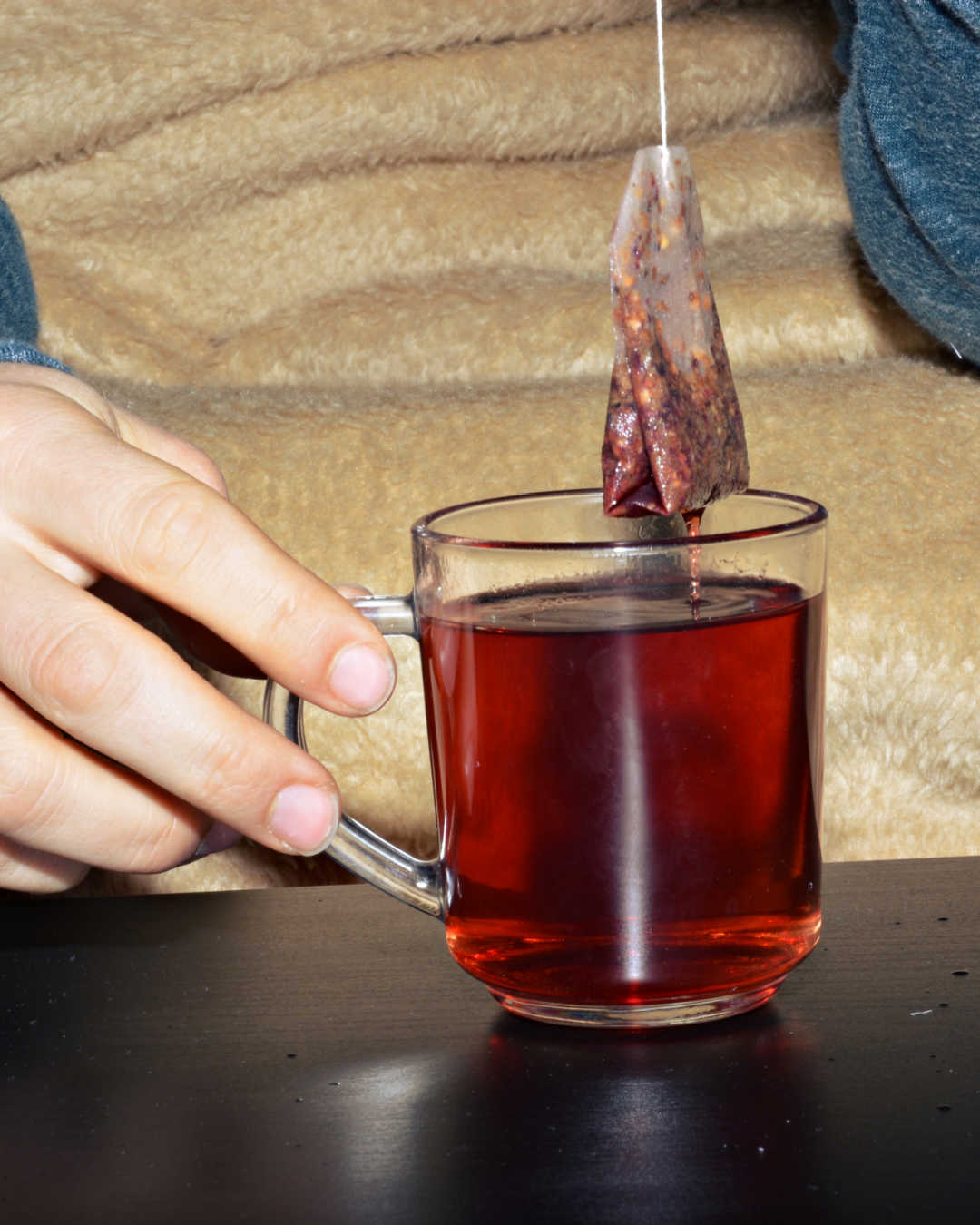
I had my first case of “coffee jitters.” Two cups of a high-caffeine “breakfast blend” coffee) too close together. Sweet jesus, it felt like an anxiety attack with the added bonus of heart palpitations. My wife (a longtime coffee drinker) just reacted with wry amusement.
Lesson learned. Never again, I will switch to half-caf or decaf in the afternoon.
Key Takeaways
- Drink at least 8 ounces of water for every cup of coffee consumed.
- Eat whole grains, nut butter, lean proteins, or fruits and vegetables.
- Light exercise.
- Deep breathing, mindfulness, meditation.
- Herbal teas like like chamomile.
- Engage in activities that capture your attention like reading a book, watching a show, or chatting with a friend.
- Be strategic about your caffeine consumption.
Understanding Coffee Jitters: What’s Happening in Your Body
Caffeine is a powerful stimulant that affects the central nervous system. When you consume coffee, caffeine quickly enters your bloodstream and reaches your brain. It blocks adenosine, a neurotransmitter that promotes sleep, leading to increased alertness and energy. However, this heightened state can also trigger symptoms like racing heart, anxiety, and shakiness—commonly known as coffee jitters.
Related Post: Coffee Caffeine Content Guide: How Much Caffeine Is Really in Your Daily Brew?
Not everyone reacts the same way to caffeine. Some people experience these jitters more intensely due to differences in metabolism, tolerance levels, and genetic factors. For instance, individuals with a slower caffeine metabolism may feel its effects for longer, making them more susceptible to jitters. Understanding these reactions helps you manage your coffee intake better and enjoy your brew without fear of the shakes.
1. Hydrate, Hydrate, Hydrate: The Power of Water

Caffeine is a known diuretic, meaning it can increase urine production and potentially lead to dehydration. When you sip on that morning coffee, you may feel energized, but your body is also working hard to process that caffeine. This processing can result in fluid loss, making hydration essential for counteracting the jittery feelings that often follow.
Water helps dilute caffeine in your bloodstream, flushing it out more efficiently. Staying well-hydrated can ease symptoms like racing hearts and anxiety that come from too much caffeine. Plus, water replenishes lost fluids, keeping your body’s systems functioning smoothly.
How Much Water Should You Drink?
To counteract jitters, aim for at least 8 ounces of water for every cup of coffee consumed. If you’re feeling especially jittery, try increasing that amount. Keeping a water bottle handy can remind you to drink throughout the day, ensuring you stay hydrated and balanced.
With proper hydration, you’ll be better equipped to manage those coffee jitters.
2. Eat Something: The Food Solution

When those coffee jitters kick in, reaching for a snack can be an easy and effective remedy. Food can play an important role in how your body processes caffeine, helping to stabilize energy levels and reduce anxiety.
Eating slows down the absorption of caffeine in your bloodstream. When you consume food, especially complex carbohydrates and proteins, it creates a buffer that helps mitigate the effects of caffeine. By slowing absorption, food can help prevent the rapid spike in energy followed by the dreaded crash.
To combat those unsettling jitters, consider munching on:
- Whole grains (like oatmeal or brown rice)
- Nut butter (peanut or almond)
- Lean proteins (chicken, turkey, or tofu)
- Fruits and vegetables (bananas, spinach)
These foods not only provide lasting energy but also help stabilize blood sugar levels, which can be affected by caffeine intake.
Timing Matters
Timing your meals in relation to coffee consumption can be key. Ideally, eat a balanced meal or snack before or while you’re drinking your coffee. This approach can smooth out caffeine’s intensity, making your experience much more enjoyable.
3. Get Moving: Physical Activity as a Remedy

A little movement can work wonders. Light exercise helps speed up the metabolism of caffeine, which means you’ll feel its effects fade away faster. When you get your body moving, it not only burns off the excess energy but also releases endorphins, those feel-good hormones that can take the edge off anxiety.
You don’t need an elaborate workout routine. Here are some easy ways to incorporate movement into your day:
- Walking: A brisk walk around the block or even just pacing in your living room can do the trick.
- Stretching: Try some gentle stretches to release tension. Focus on your neck, shoulders, and back.
- Light cardio: If you’re feeling up for it, jumping jacks or dancing to your favorite song can quickly lift your spirits.
Redirecting Energy
Exercise does more than just help metabolize caffeine; it redirects that jittery energy into something positive. Instead of feeling anxious or restless, you may find yourself feeling more relaxed and focused. So next time caffeine has you buzzing, take a break to move your body.
As you integrate movement into your routine, you’ll also build a stronger resilience to caffeine’s effects. This will make managing coffee jitters much easier in the future.
4. Try Deep Breathing and Relaxation Techniques

When coffee jitters hit, find ways to calm both your mind and body. One powerful method is deep breathing. This simple technique can slow your heart rate, lower blood pressure, and ultimately reduce the anxiety that caffeine can stir up.
Try this: Inhale deeply through your nose for a count of four. Hold your breath for another four counts, then exhale slowly through your mouth for six counts. Repeat this cycle three to five times. You’ll notice how your body begins to relax, helping to counteract those jittery feelings.
The Role of Mindfulness
Mindfulness is another effective strategy. Focus on the present moment, letting go of worries about the past or future. Acknowledge any sensations without judgment. This practice helps manage anxiety levels and creates a sense of calm amidst the caffeine chaos.
Quick Guided Relaxation Technique
Here’s a quick technique to try: Close your eyes and take a few deep breaths. Visualize a serene landscape, like a beach or forest. As you breathe in, imagine inhaling peace and calm. As you exhale, picture releasing tension and anxiety. Spend a few minutes here, allowing tranquility to wash over you.
By incorporating these techniques, you can better manage the effects of caffeine and regain your composure.
5. Consider Natural Supplements and Herbal Remedies

Natural supplements and herbal remedies can offer a gentle way to combat the jitters that caffeine can sometimes evoke. One notable ally is L-theanine, an amino acid found in tea leaves. It’s known for its calming effects, helping to balance caffeine’s stimulating properties. By promoting relaxation without drowsiness, L-theanine can smooth out the energy spikes caused by your morning brew.
Calming Herbs
Alongside L-theanine, consider incorporating calming herbs like chamomile and lemon balm into your routine. Chamomile is renowned for its soothing qualities, often brewed as a tea to help reduce anxiety and promote sleep. Lemon balm, on the other hand, has a refreshing taste and can help lift your mood while calming your nerves.
Nutritional Helpers
Don’t overlook the importance of vitamins! Vitamin B complex and magnesium play crucial roles in your body’s metabolism of caffeine. Vitamin B supports your nervous system, while magnesium helps relax muscles, counteracting the potential jitteriness from coffee.
Natural aids work best alongside other strategies to mitigate caffeine’s effects.
6. The Waiting Game: Timing and Patience
When caffeine enters your system, it triggers a cascade of reactions. One crucial aspect to understand is the half-life of caffeine, which is generally around 3 to 7 hours for most people. This means that if you consume 200 mg of caffeine, about 100 mg will still be in your system after 3 to 7 hours. During this time, you might experience symptoms like jitters, racing heart, or anxiety, but rest assured, they are usually temporary and not harmful.
Feeling jittery can be uncomfortable, but it’s important to remember that these sensations will fade. To make the waiting game easier, try to distract yourself. Engage in activities that capture your attention, such as reading a book, watching a show, or chatting with a friend.
Finding ways to pass the time can help mitigate the focus on discomfort. With patience and a little mindfulness, you’ll be back to feeling like yourself in no time.
Prevention: Avoiding Coffee Jitters in the Future
To keep coffee jitters at bay, it’s important to be strategic about your caffeine consumption. Start by paying attention to the timing of your coffee intake. Consider having your coffee earlier in the day when your body is naturally more alert, and avoid caffeine in the late afternoon or evening to prevent disruptions to your sleep.
Mind Your Portions
The amount of coffee you drink can significantly impact how you feel. Instead of chugging three cups in one go, try sipping one cup slowly. This gives your body time to process the caffeine without overwhelming your system. Pair your coffee with food—complex carbohydrates or protein can slow caffeine absorption and help stabilize blood sugar levels, reducing jitteriness.
Explore Lower-Caffeine Options
If jitters are a consistent issue, consider switching to lower-caffeine alternatives like green tea or herbal teas. These options provide a gentler energy boost without the same intensity as coffee. You might also find satisfaction in decaffeinated coffee, which allows you to enjoy the flavor without the jitters.
Monitor Your Sensitivity
Everyone reacts to caffeine differently. Keeping a journal of your coffee consumption and any symptoms can help you identify your personal tolerance level. If you notice you’re more sensitive on certain days, adjust accordingly. By being mindful of your habits, you can enjoy your coffee while keeping jitters in check.
This careful approach not only helps you enjoy your favorite beverage but also lays the groundwork for healthier habits in managing your caffeine intake. As you navigate these strategies, remember that patience and awareness are key in finding what works best for you.